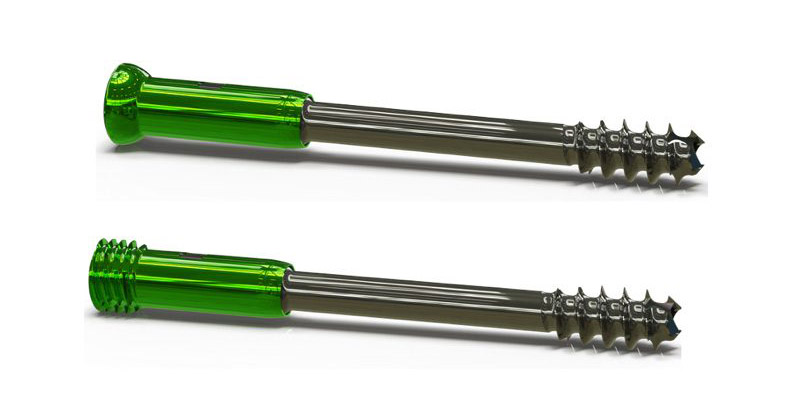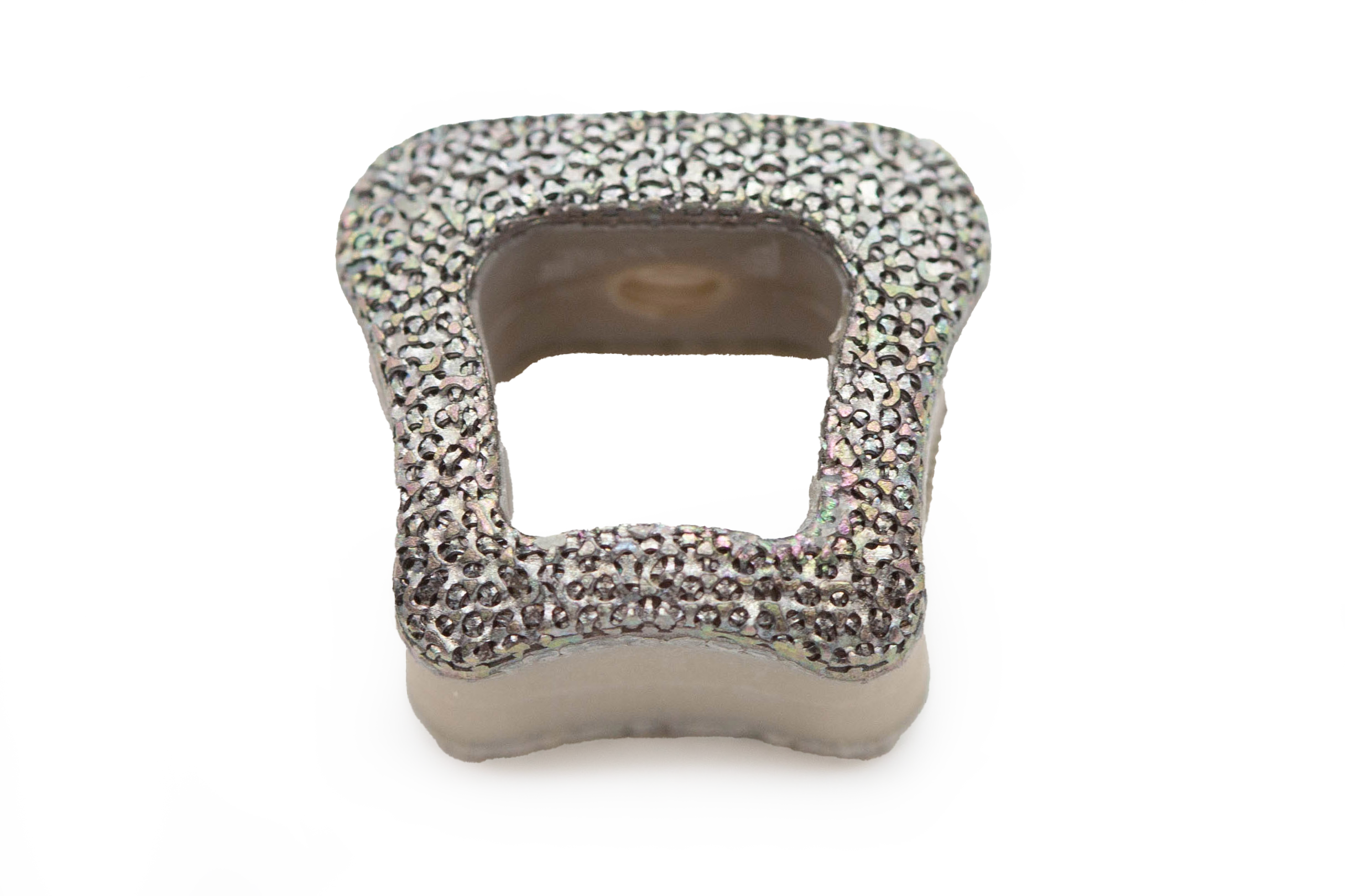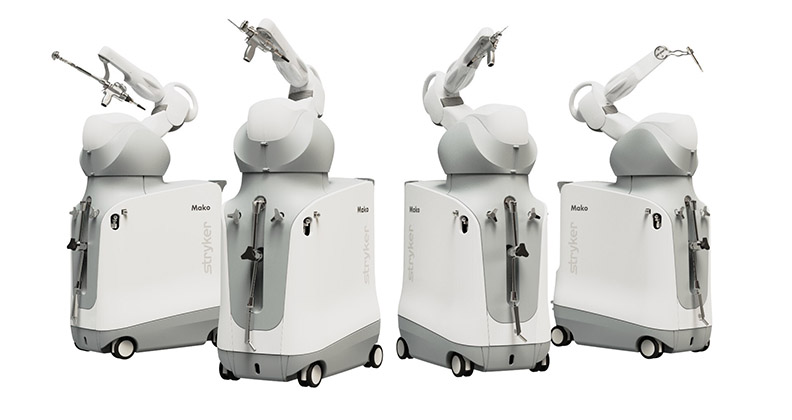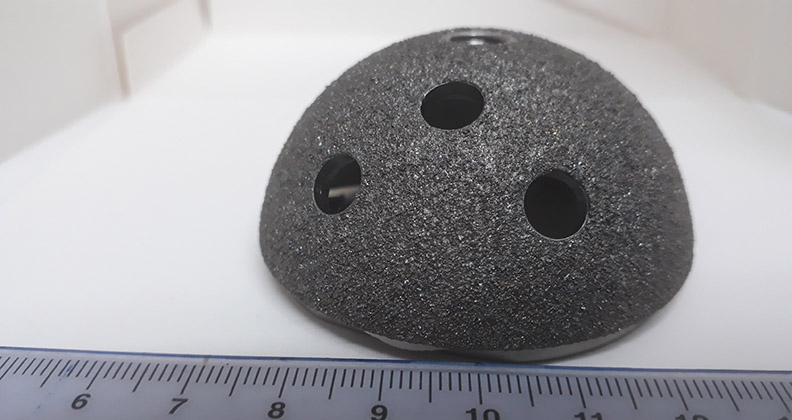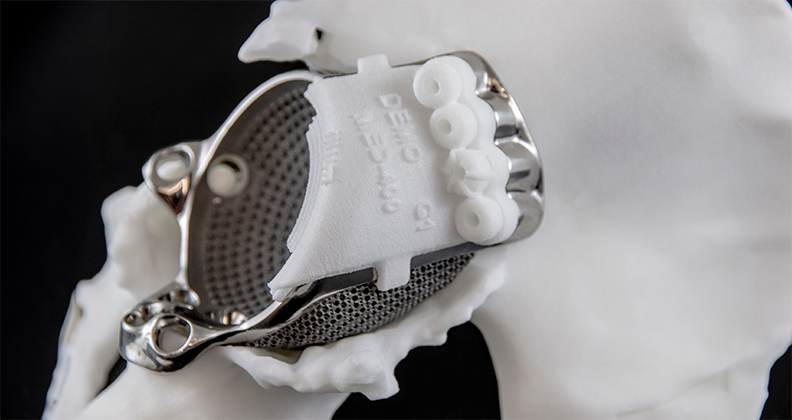
Additive manufacturing is booming in orthopedics. According to a report from Allied Market Research, the global market size was valued at $2 billion in 2022 and is projected to reach $5.3 billion by 2032, growing at a CAGR of 11.2%. Numerous companies want to capitalize on the growing industry trend by helping to advance the push for personalized surgical solutions.
“The 3D printing of patient-specific implants has rapidly advanced, especially in the last two to three years, moving from being used in complex cases to being implemented in many primary surgeries,” said Ken Gall, Ph.D., CCO and Co-Founder of restor3d. “The technology’s improved speed and capabilities have fundamentally changed how we approach implant design and has made personalized care more accessible and efficient.”
This technological leap represents a profound shift in how the orthopedic industry aims to improve patient care and promises to enhance the precision and effectiveness of surgical procedures.
Added Benefits
Brian McLaughlin, Co-Founder and Board Member of ALM Ortho, has over a decade of experience in additive manufacturing, along with a robust background in design, manufacturing and regulatory processes. McLaughlin noted that the ability to produce implants optimized for bone ingrowth is one of the most significant impacts 3D printing has on the advancement of orthopedic devices.
Traditional implants often require separate casting, forging, machining and coating processes. McLaughlin said additive manufacturing combines some of these elements into a single step, enhancing production efficiency and design flexibility, which enables the production of personalized implants.
“Every surgeon we talk to brings up a complex case for which they had trouble finding a standard implant that would work,” McLaughlin said. “They see 3D printing as the solution to that problem.”
Another standout feature of additive manufacturing is its capacity for rapid prototyping and iterative design. McLaughlin said that multiple iterations can be executed swiftly on a single platform, which is particularly helpful in orthopedics, where precision in device design is crucial.
“I just completed eight iterations of an offset neck component for a complex hip surgery, and we could print all those options overnight,” McLaughlin noted. “You can’t do that with traditional manufacturing. You might be able to do it with plastics, but not with the same material that would be used in the final implant.”
Dieter Vangeneugden, Medical Device R&D Director at Materialise, said one of the key advantages of 3D printing is its ability to produce implants that integrate solid and porous structures in a single device, eliminating the need for additional post-processing steps such as applying a porous coating.
“This not only enhances the efficiency of the manufacturing process but also makes 3D printing increasingly cost-competitive, even for mass-produced, non-personalized devices,” he added.
When it comes to manufacturing personalized devices, Vangeneugden said that 3D printing offers significant benefits over traditional methods like CNC milling or vacuum casting. However, he added, 3D-printed personalized devices are more expensive to produce than standard implants. The unique design features require careful attention to printing orientation and could involve additional post-processing steps.
“Ultimately, the affordability and scalability of 3D printing in orthopedic care are influenced by the continuous optimization of the printing process to make it more efficient, streamlined and cost-effective,” Vangeneugden said.
He noted that pre- and post-production treatments, design optimizations, cleaning and other process steps are improving, which will result in greater consistency, reduce waste and ultimately produce higher quality orthopedic devices that are precisely suited to patient needs.
Personalization is at the heart of restor3d’s efforts to craft 3D-printed implants and surgical systems that are specifically tailored to an individual patient’s unique anatomy.
“When surgeons place joint replacement implants, they are broadly trying to attach the implant to native anatomy and recreate the natural motion of the joint,” Dr. Gall said. “3D printing allows us to fine-tune bony attachment sites through surface porosity, fit the geometrical design to the bone cuts and create implant mobility based on the kinematics of the patient’s native anatomy.”
Dr. Gall noted that these benefits make 3D-printed implants a great option for more than just complicated surgeries. He also highlighted the rapid prototyping capabilities enabled by additive manufacturing and said it enables faster development cycles and quicker adjustments based on customer feedback. This is particularly beneficial when dealing with complex shapes and personalized designs that would be difficult or impossible to produce using conventional methods.
“When you’re working with porous surfaces and uniquely shaped implants, the process is far faster with 3D printing,” Dr. Gall said. “What used to take days to weeks to produce can now be done in hours, thanks to advancements in the science of metal printing coupled with multi-laser systems.”
This approach also fosters teamwork with surgeons to develop optimal solutions for their patients, whether they involve complex reconstructions or routine anatomical adjustments. “We’re not only personalizing implants and systems for patients but also adapting them to surgeons’ surgical preferences,” Dr. Gall said.
Streamlined Approach
Joint replacement surgery has seen continuous improvement, largely due to collaboration among surgeons, engineers and industry. For most patients, the increasingly refined sizing options of traditional implants have provided excellent results. Challenges remain in complex cases, such as revisions or those involving severe bone loss, when conventional implants may not suffice.
This is where 3D printing has made a significant impact, said Thomas P. Sculco, M.D., Surgeon-in-Chief Emeritus and Director of the Stavros Niarchos Foundation Complex Joint Reconstruction Center at Hospital for Special Surgery (HSS). “In cases where patients require revision surgeries — which are often complicated by previous failures, bone loss or other anatomical challenges — 3D printing allows for a more personalized approach,” he said.
HSS has taken steps to streamline the production of personalized implants by launching a center that’s dedicated to complex joint reconstructions where engineers and surgeons work side by side to develop new designs. The facility also created one of the first 3D printing centers for custom complex implants on a hospital campus. This in-house approach allows for greater control over the printing process and leads to faster turnaround times.
“The actual materials haven’t changed. We’re still using titanium alloy to print the implants,” said Joseph Lipman, Director of Device Development and Biomechanics at HSS. “But the design flexibility is significantly increased. We can design with more complex geometries to better fit the bone. The implants also have a true 3D porous geometry, which allows for better bone ingrowth.”
Dr. Sculco and colleagues use a patient’s CT or MRI scans to create 3D anatomical joint models, enabling them to design and fabricate implants tailored to address specific clinical needs. This process, which involves close collaboration with design engineers, allows for the creation of personalized implants that address complex issues and provide a level of precision and fit that standard implants cannot achieve.
It also lets surgeons like Dr. Sculco work with a 3D model of the problem anatomy and 3D-printed implant to better visualize and plan surgeries. This tactile feedback, combined with the ability to work closely with engineers to iterate implant designs, results in a more tailored surgical approach.
Dr. Sculco acknowledged the challenges associated with the widespread adoption of point-of-care 3D-printed implants, including current manufacturing times and the additional expense compared to the production of traditional implants.
McLaughlin believes that point-of-care printing could become more commonplace if additive manufacturing facilities are placed close to or at medical facilities, allowing for the rapid production and delivery of personalized implants.
This approach could significantly reduce the duration between design and implantation, making personalized care more accessible and efficient. However, McLaughlin noted that the current manufacturing and regulatory environment is not yet fully equipped to support this model and said more investment and development are needed.
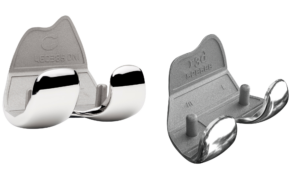
restor3d’s 3D-printed femoral component is part of the company’s efforts to produce patient-specific implants for all major joints.
Printing Potential
Over the past decade, additive manufacturing has made significant strides in orthopedic care, first with the use of plastics for models and guides and then with the use of metals to make implants and instruments.
“The next decade could be pivotal for adopting bioresorbable applications, particularly in bone regeneration,” Vangeneugden said. “The ability to scale these applications will depend on the effective use of specific materials and complex designs that only additive manufacturing can achieve to bring substantial value to patient care.”
The advantages of complex designs in orthopedic devices will become increasingly evident, and the industry will focus on delivering these innovations quickly and cost-effectively. “The integration of 3D printing with enabling technologies, such as digital twin solutions and simulation, will be essential to optimizing the outcomes of surgical procedures,” Vangeneugden said.
The potential for making cost-effective personalized implants will increase as more surgeons embrace their use, according to Vangeneugden. “But achieving this goal will depend on how companies manage supply chains and the decisions they make regarding insourcing and outsourcing,” he said. “The real challenge lies in optimizing the entire supply chain, not just the cost of the printing process.”
Vangeneugden said many aspects of digital manufacturing — such as image quality control, planning and design — offer cost-reduction opportunities through automation. He believes automation will continue to be a game-changer by reducing manual labor, shortening lead times and enhancing consistency in the production of devices.
Additionally, robust and compliant communication systems among surgical facilities and orthopedic companies will be essential for seamless data transfer and collaboration. “These systems will make personalized orthopedic devices more accessible by providing surgeons with a smooth and transparent purchasing experience, allowing them to focus on patient care rather than administrative hurdles,” Vangeneugden said.
As the market for personalized orthopedic care grows, so does technological innovation. Dr. Gall pointed out that the rapid evolution of 3D printing includes newer printers offering quicker print times and increased precision. This acceleration in printing speed — from single-laser platforms to dual- or quad-laser systems — has made it more feasible to produce personalized implants at a decreased cost and scale.
McLaughlin anticipates a period of stabilization in additive manufacturing technology that’s focused on optimizing production processes. This might include integrating software or artificial intelligence that’s capable of simulating physical stress and loading conditions during the design of implants, which could lead to the development of devices that are precisely tailored to the needs of individual patients.
While challenges in the development of additive manufacturing remain, the benefits — particularly for complex and revision cases — are undeniable. As printing technology matures, personalized care might become the standard rather than the exception in orthopedic surgery.
“Patients will quickly understand the benefits,” Dr. Gall said. “Would they rather have an implant built personally for them or a standard off-the-shelf device? That’s going to be a major driving force in the growth of personalized systems moving forward.”
KK
Kendal Kloiber is a contributing editor.

